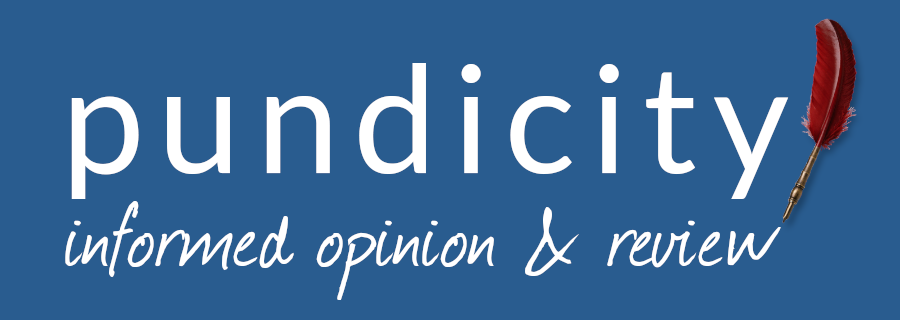Last Friday's summit meeting in Alaska was short on substance but long on symbolism.
For example, following the talks, Russian President Vladmir Putin laid flowers on the graves of Soviet World War II servicemen at Fort Richardson National Cemetery.
He was attempting to convey that since the U.S. and Russia were allies in the greatest conflict of the 20th century, surely they can be friends in the current era.
But here's a pesky historical reminder: In 1939, Communist dictator Josef Stalin made a 10-year non-aggression pact with Nazi dictator Adolf Hitler to divide Eastern Europe between them. On June 22, 1941, to Stalin's shock, Hitler invaded Russia.
Two days later, President Franklin D. Roosevelt declared that the U.S. would help Stalin defend his country. Thus, the U.S.-Soviet alliance began.
The alliance ended after Hitler's defeat, when Stalin transformed the nations of Eastern and Central Europe into satellites of his evil empire.
Another example of messaging: Sergey Lavrov, Mr. Putin's longtime foreign minister and factotum, arrived in Anchorage wearing a shirt with "CCCP" written across the front. Those are, of course, the Cyrillic letters for USSR.
Was this his way of saying the Cold War never ended?
Or was he reminding the gathering that Ukraine had been a Soviet possession and therefore – according to his perverse logic – should now become a Russian possession?
Maybe both.
President Trump sent a message, too. While Mr. Putin walked from his plane on a red carpet, in the sky above him flew a B-2 – the high-tech strategic bomber that recently dropped Massive Ordnance Penetrators (MOPs) on the nuclear weapons facilities of the Islamic Republic of Iran.
The regime in Tehran is Mr. Putin's ally with whom, last January, he signed a 20-year Comprehensive Strategic Partnership Treaty that includes economic, military, and intelligence cooperation.
Both Moscow and Tehran have close ties with the Communist rulers in Beijing and Pyongyang. In combination, these four tyrannies constitute an anti-American Axis of Aggressors.
President Trump characterized his three-hour meeting with Mr. Putin as "productive." But a luncheon for the Russian and American delegations was canceled. And no questions were taken at the so-called press conference that followed the meeting.
Prior to the summit, Mr. Trump had told Fox News' Bret Baier: "I won't be happy if I walk away without some form of ceasefire." So, we must infer that he didn't depart Alaska with a big smile on his face.
But he also didn't make a bad deal with Mr. Putin. And no deal is always preferable to a bad deal.
Mr. Trump later revealed on Truth Social that Mr. Putin had persuaded him that concluding a peace agreement "which would end the war" is both possible and preferable to ceasefires which "often do not hold up."
Let me tell you why I'm skeptical.
In his prepared remarks in Anchorage. Mr. Putin reiterated one of his main talking points: that any peace agreement must address "the primary causes" of the conflict.
By that he means Ukrainians insisting that they are not rogue Russians living in the boondocks but a free and independent nation that refuses to ever again be ruled by either a tsar or a commissar in the Kremlin.
Restoring the diminished Russian/Soviet empire is Mr. Putin's mission. He began in 2008 by sending his soldiers into Georgia – another former Soviet "republic" – where they sliced off two territories, Abkhazia and South Ossetia.
Today, in addition to occupying Georgian territory, Moscow exerts significant and malevolent influence over Georgia's ruling political party, Georgia Dream, founded by Bidzina Ivanishvili, a billionaire who made his fortune in Russia.
Mr. Putin also is waging a hybrid warfare campaign – combining political, economic, propaganda, and security pressure – against Moldova, another formerly Soviet country. Transnistria, a strip of land along Moldova's eastern border, is already a de facto Russian colony.
In 2014, Mr. Putin's forces invaded, conquered, and illegally annexed Ukraine's Crimean Peninsula. They also instigated an insurgency in the Donbas, the easternmost region of Ukraine, declaring what they called the Donetsk People's Republic and the Luhansk People's Republic – both of which were later illegally annexed into the Russian Federation.
And of course, on Feb. 24, 2022, Mr. Putin again invaded Ukraine, initiating the largest and deadliest war in Europe since Germany invaded Poland on Sept. 1, 1939.
In a phone call following the summit, Mr. Trump reportedly told Ukrainian President Volodymyr Zelensky that Mr. Putin will "promise" to end the war if Ukraine agrees to cede the Donbas – not all of which Russian forces have conquered and occupied.
The problem is that within the Donbas is the "fortress belt," a chain of fortified towns and cities that have prevented Russian forces from penetrating more deeply into Ukraine.
Could an American/European "security guarantee" serve the same purpose and do it as well?
Maybe.
One more pesky historical reminder: In 1940, Stalin invaded Estonia, Latvia, and Lithuania, and declared them Soviet Republics. The U.S. never gave legal recognition to those conquests.
These Baltic nations, along with Ukraine, Georgia, and Moldova, regained their independence following the 1991 collapse of the USSR.
Like Ukraine, they are once again endangered nations. Like Ukraine, they want nothing more than to remain members of an American-led community of free and independent democracies – what we used to call the Free World.
A final word: On Monday, President Trump met in the Oval Office with President Zelensky. They appeared to get along swimmingly.
What they may have agreed upon we don't yet know. Afterwards, on Truth Social, Mr. Trump said he called Mr. Putin to start planning additional talks including "a Trilat which would be the two presidents, plus myself."
Will this next round of negotiations bring a halt to Mr. Putin's war?
Maybe.

